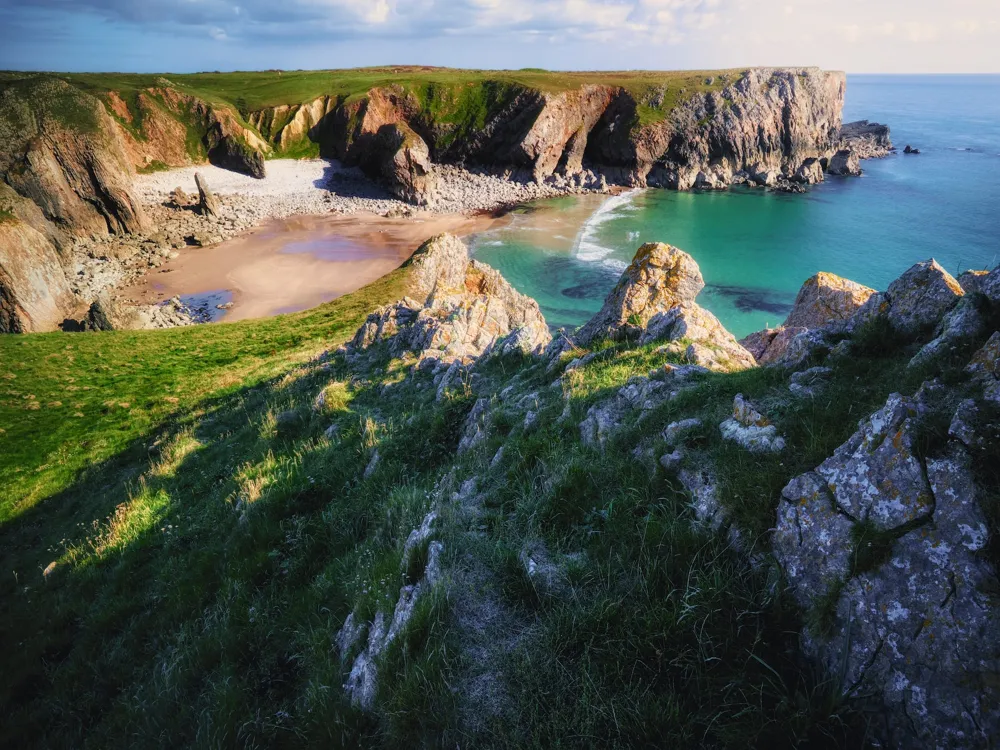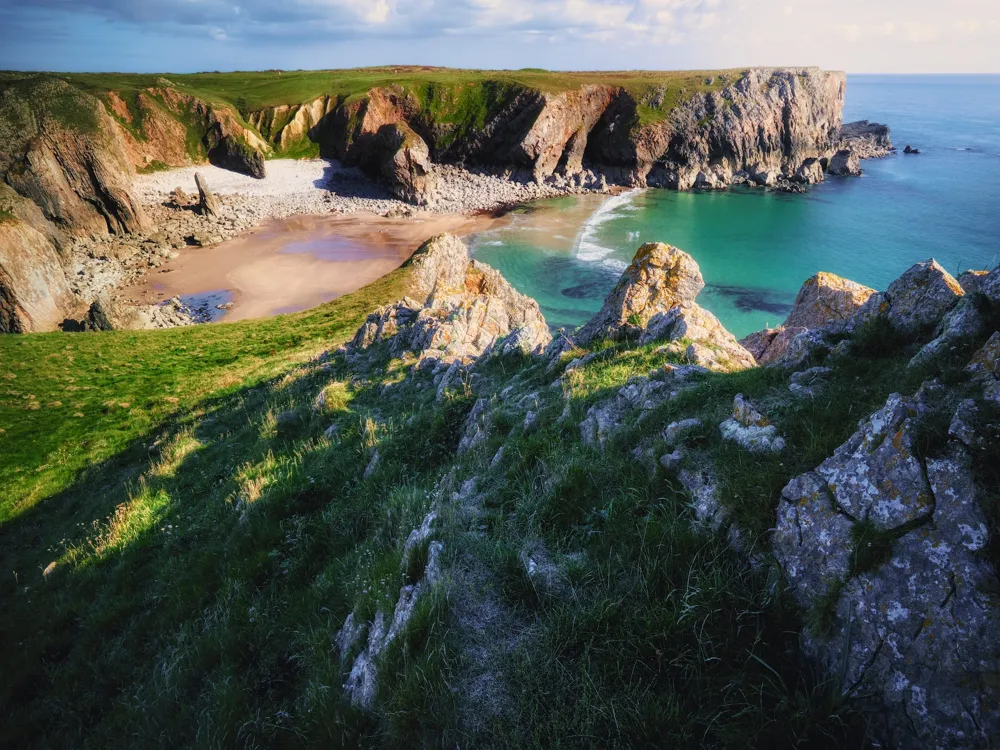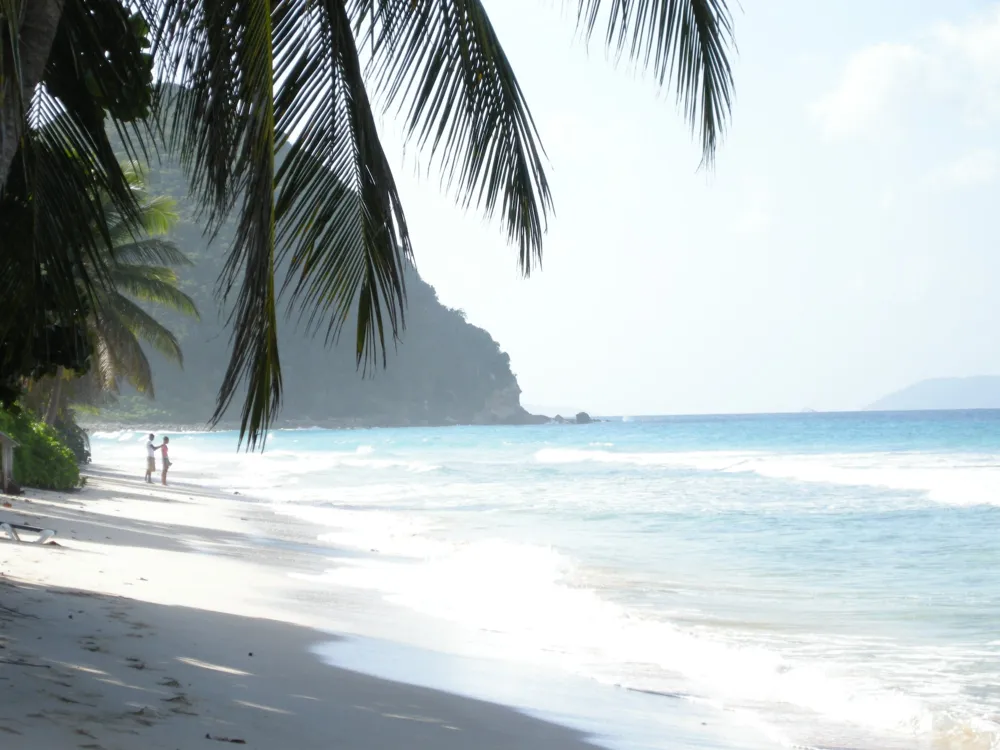Halong Bay, a UNESCO World Heritage Site in northeastern Vietnam, is renowned for its breathtaking scenery, formed by thousands of limestone karsts and isles in various shapes and sizes. This natural wonder spans an area of around 1,553 square kilometers and is home to approximately 1,600 islands and islets, most of which are uninhabited and unaffected by human presence. The bay's name, 'Halong,' translates to 'Descending Dragon,' which is fitting given the area's mystical and otherworldly ambiance.
The geology of Halong Bay is as fascinating as its scenic beauty. These formations are the result of millions of years of limestone erosion and deposition, creating a unique landscape that is both rugged and delicate. This karst landscape is not only visually stunning but also offers a habitat for diverse flora and fauna, contributing to the bay's ecological value. Halong Bay's climate is tropical, with two main seasons: a hot, humid summer and a cooler, drier winter, making it a year-round destination.
Beyond its natural beauty, Halong Bay holds significant cultural and historical value. It has been the setting for local legends and myths, adding a layer of mystique to its towering limestone pillars. The bay is also a cradle of ancient Vietnamese culture with several important archaeological sites. The floating villages and local fisherfolk who inhabit these waters add to the area's rich cultural tapestry, offering visitors a glimpse into traditional Vietnamese water-based living.
Halong Bay is not only a place of immense natural beauty but also a testament to the power of nature in shaping a landscape that captures the imagination and awe of all who visit. Its combination of ethereal natural beauty, cultural significance, and rich history makes it a must-visit destination for travelers worldwide.
While Halong Bay is predominantly known for its natural landscapes, the architecture associated with this region is equally captivating. This includes both historical structures and modern developments that blend harmoniously with the natural surroundings. The architecture in Halong Bay can be broadly categorized into three types: traditional Vietnamese, French colonial, and contemporary designs.
Traditional Vietnamese architecture in Halong Bay is best exemplified by the ancient fishing villages and residential structures floating on the bay. These floating homes and community structures are built on rafts and pontoons using local materials like bamboo and wood. They represent a unique architectural style that is not only functional but also sustainable, as it adapts to the changing water levels and conditions of the bay.
French colonial influence is evident in some of the older buildings in the region, especially in the town of Halong. These structures, built during the colonial period, showcase the fusion of European and Asian architectural styles. The use of local materials and adaptation to the tropical climate is a hallmark of this style, with features like wide verandas, shutters, and tiled roofs.
Contemporary architecture in Halong Bay is a reflection of Vietnam's rapid development. Modern resorts, hotels, and infrastructure developments are designed with an emphasis on sustainability and environmental preservation. These structures often incorporate elements of traditional Vietnamese design, but with a modern twist, using eco-friendly materials and technologies to reduce their impact on the natural environment.
Overall, the architecture of Halong Bay is a blend of history, culture, and modernity, reflecting the region's rich heritage and its adaptation to contemporary challenges. It adds another layer to the experience of visiting this magnificent natural wonder.
The best time to visit Halong Bay is during the spring (March to May) or fall (September to November) when the weather is more temperate and rainfall is minimal. Summer months can be hot and humid, while winter can be quite cool and foggy.
Selecting the right cruise is crucial for your Halong Bay experience. Consider factors like the length of the cruise, size of the boat, on-board amenities, and the itinerary. There are options ranging from budget to luxury, so choose one that suits your preferences and budget.
Don't miss out on trying the local cuisine, especially seafood, as it's fresh and flavorful. Many cruises offer seafood dinners with locally sourced ingredients, providing an authentic culinary experience.
Practice responsible tourism by respecting local customs, minimizing environmental impact, and supporting local businesses. Halong Bay's ecosystem is fragile, so it's important to be mindful of your environmental footprint.
Pack light but don't forget essentials like sunscreen, insect repellent, comfortable shoes for exploring, and a camera to capture the stunning scenery. Also, dress in layers as the weather can change quickly.
Halong Bay is accessible by various modes of transportation. The most common way to reach Halong Bay is by road from Hanoi, which takes about 3-4 hours. There are also options for shuttle buses, private cars, or even seaplanes for a more scenic and quicker journey. Additionally, some visitors choose to arrive via cruise ships as part of a larger itinerary.
Overview of Halong Bay
Architecture of Halong Bay
Tips When Visiting Halong Bay
Best Time to Visit
Choosing a Cruise
Local Cuisine
Responsible Tourism
Packing Essentials
How To Reach Halong Bay
Soi Sim Island
Halong Bay
₹ 15,260 onwards
View halong-bay Packages
Halong-bay Travel Packages
View All Packages For Halong-bay
Top Hotel Collections for Halong-bay

Private Pool

Luxury Hotels

5-Star Hotels

Pet Friendly
Top Hotels Near Halong-bay
Other Top Ranking Places In Halong-bay
View All Places To Visit In halong-bay
View halong-bay Packages
Halong-bay Travel Packages
View All Packages For Halong-bay
Top Hotel Collections for Halong-bay

Private Pool

Luxury Hotels

5-Star Hotels

Pet Friendly






















